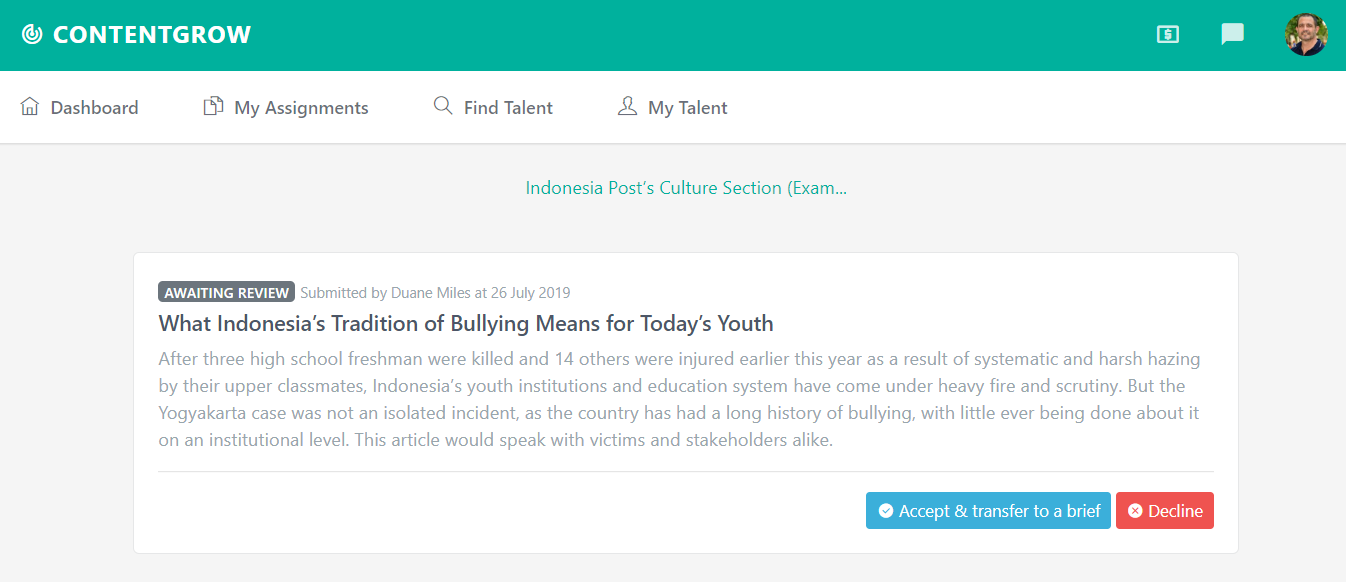ContentGrow’s pitch feature helps publishers farm creativity
Often, editors need freelancers to do the thinking for them. ContentGrow's pitch feature works as a way to source ideas at scale from your talent pool.

Often, editors need freelancers to do the thinking for them. It’s just the way it is. But when working with a decentralized team of indie content creators, there is one thing that all publishers know to be true:
Final work that was originally thought up by the writer almost always turns out better than assignment ideas are dictated by the editor.
The reason for this is simple. Content creators pitch ideas where they already have domain expertise or great network capital to draw from.
For example, let’s say your client is asking for content related to the tech business scene in Singapore. Before dreaming up generic ideas from behind your own desk (e.g. ‘How to build a tech business’…gross), use ContentGrow’s pitch feature to harvest ideas from your team.
Because their network and knowledge differs from yours, odds are you’ll end up with much deeper pitches (e.g. ‘One entrepreneur’s relentless quest to build a billion-dollar food app in Singapore’…Ah, that’s better).
The best part is that you as the in-house mastermind of the project don’t need to do a ton of research and brainstorming. Instead, just put out a call for pitches to your team, then sit back and let them roll in! Ten minds are better than one.
After harvesting ideas about what to produce, the manager can then cherry pick the pitches she likes best, and share them with the client to be greenlit. Pitches approved by the client may then be turned into active briefs.
See: ContentGrow review - a specialist's marketplace for journalism and PR
Here’s how it works

Put together some brief guidelines on ‘how to pitch’ and have your project manager post them in the project overview.
Have your manager inform the team that the project is actively seeking pitches. As a rule of thumb, the more ideas that contributors pitch, the higher the chance they should have of getting assignments green-lit.
A contributor should be able to clearly see a pitch button via the project, visible on his dashboard. From here, all he needs to do is come up with a title and a brief description of the content he’s suggesting.
After clicking save, the pitch will appear inside the project, along with all other pitches delivered by fellow team members.
The manager can view the pitch and — when the time is right — decide whether she will accept or decline each one. The contributor can also update a submitted pitch for better suitability after getting feedback.
If the manager declines a pitch, the contributor will know that his idea has been shot down (such as life). If the manager accepts the pitch, she may then turn it into an active brief for the contributor to begin working on.
As publishers know, pitching is a key part of of the service relationship with the freelancer. That’s why ContentGrow has made it easy to conserve in-house mental bandwidth and leverage out-of-house creativity with ease.
ContentGrow makes it easy for anyone to start a content agency from zero. Fill out the form below to get your own shortlist of talent or visit the site to get started.


